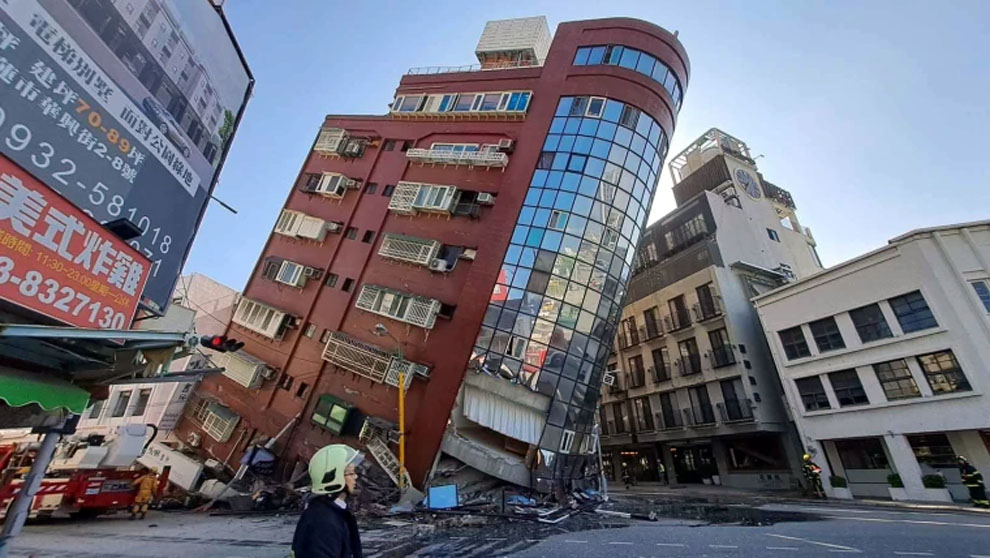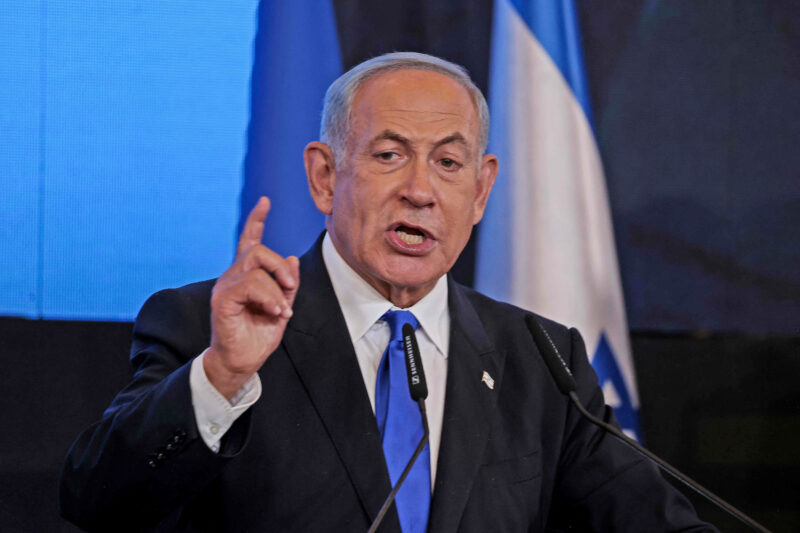International
Watching Ukraine, Bosnians relive the trauma of their war

“Not so long ago, we were them,” said Amra Muftic who survived the 1992-95 siege, watching news reports showing civilians taking refuge from Russian rocket attacks, shelling and gunfire in basements and metro stations.
“If our experience is anything to go by — and I have a gut feeling that it is — things are about to get much worse,” for them, she added.
Bosnian Serb forces laid siege to Sarajevo in the early 1990s, during the bloody break-up of Yugoslavia. Some 350,000 people were trapped, for 46 months, in their multiethnic city, subjected to daily shelling and sniper attacks and cut off from regular access to electricity, food, water, medicine, and the outside world.
More than 11,000 people were killed during the siege, including over 1,000 children. Countless others were wounded.
“We know how they feel. We survived the longest siege in modern history” said Elma Vukotic, an anesthesiologist, as she and her fellow healthcare workers stood earlier this week outside their Sarajevo hospital, clad in their medical robes and holding balloons in the blue and yellow colors of the Ukrainian flat — and, coincidentally, also the Bosnian one. Vukotic said their spontaneous show of solidarity was the least they could do for their Ukrainian colleagues.
“All wars are painful, all attacks against civilians abhorrent, but what is happening to Ukrainians right now is especially traumatic for us because they are so near and in a situation very similar to ours” three decades ago, Vukotic said.
READ ALSO:
- Sanusi: Nigerians Manipulate Religion To Cover The Truth
- Saka On Target As Arsenal Beat Watford To Leapfrog Manchester United
- Russian strike destroys Ukrainian airport
“Television images of pregnant women waiting to give birth in the basement of the Kyiv hospital, hastily converted into an emergency bomb shelter, gave me a strong sense of deja vu; I know exactly how they feel, how terrified they must be,” she added. “Also, I think we all can empathize with how unwilling ordinary Ukrainians were to accept that the war was coming until Russian rockets and bombs started raining down on their homes, schools and hospitals.”
The Bosnian war started when Bosnian Serbs, with the help of the Yugoslav army, tried to create ethnically pure territories with the aim of joining neighboring Serbia. More than 100,000 people were killed and 2 million — more than a half of the country’s population — were left homeless during the conflict.
The Serb leadership argued throughout the war that multiethnic Bosnia was not a country at all and that, along with its Catholic Croats and its Bosniaks, who are mostly Muslim and account for about half of the population, it should be split between neighboring Serbia and Croatia. Bosniaks, they insisted, were just treacherous Serb converts who centuries ago abandoned their original (Orthodox Christian) faith.
Many in Sarajevo heard the echoes of those old insults in Vladimir Putin’s recent statements, offered to justify Russia’s invasion of Ukraine.
A United Nations arms embargo maintained in Bosnia throughout the 1990s conflict gave Bosnian Serb militias, armed and backed by the Serbia-controlled Yugoslav Army, an edge in the fight. They conquered 60% of Bosnia’s territory in less than two months, committing horrendous atrocities against their Bosniak and Croat compatriots.
In 1995, the U.S.-brokered Dayton Peace agreement put an end to the bloodshed in Bosnia by dividing the country into two semi-autonomous parts — one run by the Serbs and the other shared by Bosniaks and Croats. The two are linked by weak multiethnic institutions.
But living together in the aftermath of a brutal, fratricidal conflict has proven to be difficult.
The postwar power-sharing system perpetuates the polarized and venomous political climate in Bosnia, while its entrenched nationalist leaders continuously stoke ethnic animosities for political gain.
With Moscow’s backing, the strongly pro-Russian Bosnian Serbs, in particular, have been advocating for years for the independence of their region. Meanwhile, sectarian networks of patronage and pervasive corruption, which gradually became integral to the system, ensure that Bosnia remains one of the poorest countries in Europe, increasingly hemorrhaging its best and brightest.
“Right now, Ukrainians are subjected to torture, they are pleading for help and hoping for who knows what,” said Zoka Catic, a film-maker and journalist from Sarajevo who has spent years documenting the devastating impact of war on the mental health of Bosnians of all ethnic stripes.
No matter how the conflict in Ukraine ends, he argued, there is no such thing as a happy ending to a war.
“It is just a matter of time…before (Ukrainians) turn into us: sad, unhappy people who experienced the worst feeling in the world — helplessness.”
International
Large-scale earthquake hits Taiwan

Large-scale earthquake hits Taiwan
A cluster of earthquakes struck the island republic of Taiwan early Tuesday, the strongest having a magnitude of 6.1, U S Geological Survey reported.
There were no reports of casualties in the quakes, although there were further damages to two multi-story buildings that had been evacuated following a magnitude 7.4 quake that hit the island earlier this month, killing 13 people and injuring over 1,000. That earthquake was centred along the coast of the rural and mountainous Hualien County.
It was the strongest earthquake in the past 25 years in Taiwan and was followed by hundreds of aftershocks. The quakes Tuesday’s are considered the latest of those.
According to the USGS, Tuesday’s quake of 6.1 magnitude had its epicentre 28 kilometres (17.5 miles) south of the city of Hualien, at a depth of 10.7 kilometers. The half-dozen other quakes ranged from magnitude 4.5 to magnitude 6, all near Hualien. Taiwan’s own earthquake monitoring centre put the magnitude of the initial quake at 6.3. Such small discrepancies are common between monitoring stations.
READ ALSO:
- ‘Tiwa Savage paid IT expert to wipe sextape off internet’
- Senate backs education minister over 18-year entry age into varsities
- Nollywood actor Zulu Adigwe is dead
The largest among them were two earthquakes of magnitude 6.0 and 6.3 that occurred at 2:26 a.m. and 2:32 a.m. Tuesday, respectively, according to the Taiwan center. Numerous of the scores of aftershocks could be felt on the upper floors of apartment buildings in the capital, Taipei, about 150 kilometres (93 miles) across steep mountains to the northwest.
The Full Hotel in downtown Hualien partially collapsed during the quakes and was left leaning at a severe angle. However, it had been undergoing renovations and was unoccupied at the time. The nearby Tong Shuai Building was also empty, having been marked for demolition after being heavily damaged in the April 3 quake.
Schools and offices in Hualien and the surrounding county were ordered closed on Tuesday as hundreds of aftershocks continued to strike on land and just off the coast in the Pacific Ocean, the vast majority below magnitude 3. Authorities advised anyone whose home had been damaged in the last quake to move out until the aftershocks subsided, and some decided to wait in their cars.
Large-scale earthquake hits Taiwan
International
Stormy flood: Dubai airports return to operations after flights cancellation

Stormy flood: Dubai airports return to operations after flights cancellation
Emirates Airlines, in conjunction with FlyDubai, has resumed its regular flight operations from Dubai International Airport, marking a pivotal moment in the restoration of normalcy following the recent disruptions.
The decision on flight resurgence was finalised on Saturday, April 20, 2024, after the unprecedented rainfall, resulting in significant flooding across the city, inflicted substantial challenges on Dubai International Airport, disrupting flight schedules and causing numerous cancellations and delays.
Emirates Airlines, the largest carrier at the airport, bore the brunt of the impact, with approximately 400 flights cancelled, exerting strain on passengers and airport infrastructure.
READ ALSO:
- ICPC to arraign two Abuja residents over N550m illegally sent to their accounts
- BREAKING: Rivers Assembly ignores Fubara, passes LG bill into law
- BREAKING: Rivers Assembly ignores Fubara, passes LG bill into law
Tim Clark, President of Emirates, acknowledged the gravity of the situation, highlighting the formidable obstacles presented by the adverse weather conditions. The inundation prompted Emirates and FlyDubai to temporarily halt check-in and transit services at Dubai International Airport, leaving thousands of travelers stranded amidst the chaos.
Speaking via a statement in his open letter addressed to passengers, Clark recognized the frustration stemming from congestion, lack of information, and confusion within the terminals.
“Most sincere apologies to every customer who has had their travel plans disrupted.” With the airport struggling to manage the aftermath of the flooding, hundreds of thousands of passengers found themselves stranded, exacerbating the challenges faced by Emirates, the world’s busiest international aviation hub.
Stormy flood: Dubai airports return to operations after flights cancellation
International
Netanyahu vows to increase military pressure on Hamas

Netanyahu vows to increase military pressure on Hamas
Israel will increase ‘military pressure’ on Hamas in a bid to secure the release of hostages held in Gaza, Prime Minister Benjamin Netanyahu has vowed.
Netanyahu threatened action ‘in the coming days’ and promised Israeli forces would ‘deliver additional and painful blows’ without specifying further.
Despite an international outcry, Netanyahu has repeatedly said that the army will launch a ground assault on Rafah, a southern Gaza city so far spared an Israeli invasion where more than 1.5 million Palestinians have taken refuge.
Israeli strikes on Rafah overnight killed 22 people, including 18 children, health officials said Sunday.
The premier’s latest remarks came a day after US lawmakers approved $13 billion in new military aid to close ally Israel, even as global criticism mounts over the dire humanitarian crisis in the besieged Gaza Strip.
Hamas, whose October 7 attack triggered the Gaza war, said the US aid was a ‘green light’ for Israel to ‘continue the brutal aggression against our people’.
Netanyahu, in a video statement on Sunday, the eve of the Jewish holiday of Passover, said Israel ‘will deliver additional and painful blows’ to Hamas.
‘In the coming days we will increase the military and political pressure on Hamas because this is the only way to free our hostages,’ he said.
‘We will land more and painful blows on Hamas – soon.’
Israel estimates 129 captives remain in Gaza after the October 7 Hamas attack, including 34 who the military says are dead.
READ ALSO:
- Reno Omokri to Obidients: Name one school Peter Obi initiated as Anambra gov
- Suspected killers of Kaduna seminarian who burnt Catholic parish still in prison custody – Police
- Kano Agency: How we traced over N50 billion LG funds diverted by Ganduje
The army has said at least some of the hostages are held in Rafah, which has so far been spared an Israeli invasion and is where most of Gaza’s 2.4 million people have sought shelter.
Earlier this week, the G7 group of developed economies said that it opposed a ‘full-scale military operation’ there, fearing ‘catastrophic consequences’ for civilians.
Israeli forces had already been carrying out regular strikes on the city.
Netanyahu has faced pressure within Israel, with an anti-government rally in Tel Aviv on Saturday demanding action to secure the release of hostages.
Ofir Angrest, whose brother Matan was kidnapped on October 7, called for Jewish Israelis to leave an empty chair at their Seder meals, marking the beginning of Passover on Monday, to remember the captives.
Israel has carried out near-daily air raids on Rafah, where more than half of Gaza’s population of 2.3 million has sought refuge from fighting elsewhere.
The first Israeli strike in Rafah killed a man, his wife and their 3-year-old child, according to the nearby Kuwaiti Hospital, which received the bodies. The woman was pregnant and the doctors saved the baby, the hospital said. The second strike killed 17 children and two women from an extended family.
‘These children were sleeping. What did they do? What was their fault?’ asked one relative, Umm Kareem. Another relative, Umm Mohammad, said the oldest killed, an 80-year-old aunt, was taken out ‘in pieces.’ Small children were zipped into body bags.
Mohammed al-Beheiri said his daughter, Rasha, and her six children, the youngest 18 months old, were among those killed. A woman and three children were still under the rubble.
The Israel-Hamas war has killed over 34,000 Palestinians, according to local health officials, at least two-thirds of them children and women.
It has devastated Gaza’s two largest cities and left a swath of destruction. Around 80 per cent of the territory’s population have fled to other parts of the besieged coastal enclave.
The $26 billion aid package approved by the US House of Representatives on Saturday includes around $9 billion in humanitarian assistance for Gaza, which experts say is on the brink of famine. The Senate could pass the package as soon as Tuesday, and President Joe Biden has promised to sign it immediately.
The conflict, now in its seventh month, has sparked regional unrest pitting Israel and the US against Iran and allied militant groups across the Middle East. Israel and Iran traded fire directly this month, raising fears of all-out war between the longtime foes.
READ ALSO:
- JAMB sanctions officials for asking candidate to remove Hijab
- MKO family disowns late patriarch’s widow championing Yoruba Nation cause
- Biden considers $1bn weapon package for Israel
Tensions have also spiked in the Israeli-occupied West Bank. Israeli troops killed two Palestinians who the military says attacked a checkpoint with a knife and a gun near the southern West Bank town of Hebron early Sunday.
The Palestinian Health Ministry said the two killed were 18 and 19, from the same family. No Israeli forces were wounded, the army said.
The Palestinian Red Crescent rescue service said it had recovered 14 bodies from an Israeli raid in the Nur Shams urban refugee camp in the West Bank that began late Thursday. Those killed include three militants from the Islamic Jihad group and a 15-year-old boy.
The military said it killed 14 militants in the camp and arrested eight suspects. Ten Israeli soldiers and one border police officer were wounded.
In a separate incident in the West Bank, an Israeli man was wounded in an explosion Sunday, the Magen David Adom rescue service said.
A video circulating online shows a man approaching a Palestinian flag planted in a field. When he kicks it, it appears to trigger an explosive device.
At least 469 Palestinians have been killed by Israeli soldiers and settlers in the West Bank since the start of the war in Gaza, according to the Palestinian Health Ministry. Most have been killed during Israeli military raids, which often trigger gunbattles, or in violent protests.
The war in Gaza was sparked by an unprecedented Oct. 7 raid into southern Israel in which Hamas and other militants killed around 1,200 people, mostly civilians, and abducted around 250 hostages. Israel says militants are still holding around 100 hostages and the remains of more than 30 others.
Thousands of Israelis have taken to the streets to call for new elections to replace Netanyahu and a deal with Hamas to release the hostages. Netanyahu has vowed to continue the war until Hamas is destroyed and all the hostages are returned.
The war has killed at least 34,097 Palestinians and wounded another 76,980, according to the Gaza Health Ministry. The ministry does not differentiate between combatants and civilians in its count. It says the real toll is likely higher as many bodies are stuck beneath the rubble or in areas that medics cannot reach.
Israel blames Hamas for civilian casualties because the militants fight in dense, residential neighborhoods. The military rarely comments on individual strikes, which often kill women and children. The military says it has killed over 13,000 Hamas fighters, without providing evidence.
Netanyahu vows to increase military pressure on Hamas
dailymail
-

 Education4 days ago
Education4 days agoWhy we charge N42m fees for primary school pupils — Charterhouse Lagos
-

 News6 days ago
News6 days agoUpdated: More trouble for Yahaya Bello as Immigration places him on watch list
-

 Auto5 days ago
Auto5 days agoWe expect massive roll-outs of Nigeria-made cars by December 2024 – Minister
-

 International6 days ago
International6 days agoUpdated: Tragedy hits Kenya, Defence chief, nine others die in military helicopter crash
-

 metro5 days ago
metro5 days agoJUST IN : Borrow pit collapses, kills seven Qur’anic school pupils
-

 News4 days ago
News4 days agoWe’re not part of Yoruba Nation agitation, says MKO Abiola family
-

 metro3 days ago
metro3 days agoHow gunmen killed Babcock university lecturer, abducted two – Police
-

 News7 days ago
News7 days agoYahaya Bello: EFCC warns against obstruction of operations






















